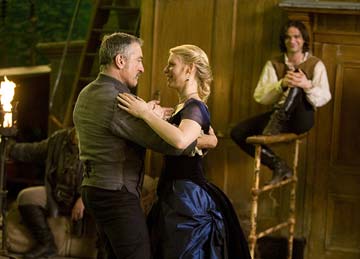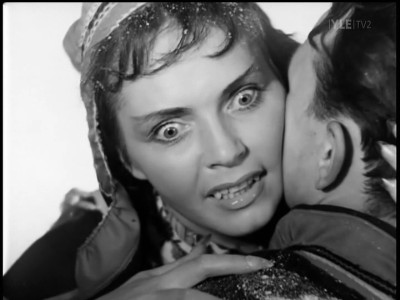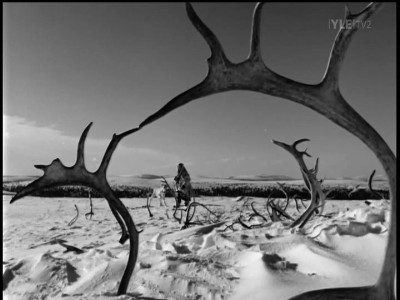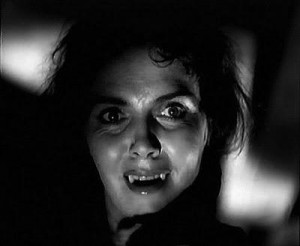 EXCALIBUR (1981); Dir: John Boorman; Starring Nigel Terry, Nicol Williamson, Patrick Stewart, Helen Mirren, Liam Neeson, Gabriel Byrne, Corin Redgrave, Nicholas Clay; Mythic Movies Series presented by the Mythic Imagination Institute at the Plaza Theatre, Thurs. Nov. 15; 7:30 PM; Discussion following; $10; trailer here.
EXCALIBUR (1981); Dir: John Boorman; Starring Nigel Terry, Nicol Williamson, Patrick Stewart, Helen Mirren, Liam Neeson, Gabriel Byrne, Corin Redgrave, Nicholas Clay; Mythic Movies Series presented by the Mythic Imagination Institute at the Plaza Theatre, Thurs. Nov. 15; 7:30 PM; Discussion following; $10; trailer here.
By Thomas Drake
Contributing Writer
“I think of the story, the history, as a myth. The film has to do with the mythical truth, not historical truth; it has to do with man taking over the world on his own terms for the first time.”
- Director John Boorman, EXCALIBUR
Short: “Merlin: STAND BACK! Be silent! Be still!… That’s it… and look upon this moment. Savor it! Rejoice with great gladness! Great gladness! Remember it always, for you are joined by it. You are One, under the stars. Remember it well, then… this night, this great victory. So that in the years ahead, you can say, ‘I was there that night, with Arthur, the King!’ For it is the doom of men that they forget.”
Medium: John Boorman’s EXCALIBUR returns to the roots of the Arthurian legend following the familiar epic storyline of Thomas Malory‘s LE MORTE D’ARTHUR with some modern twists. The wizard Merlin aids Uther Pendragon in King Arthur’s conception. Merlin then has Arthur claim the Sword in the Stone to certify his claim to kingship. The story fast-forwards to first meeting between Lancelot and Arthur, who in a fit of pride shatters the Sword in the Stone. The Lady in the Lake restores the sword and the Knights of the Round Table are forged. Lancelot and Guivere’s betrayal shatters the land forcing the knights to desperately search for the Holy Grail.
Maximum Verbosity: There is a lot to say about this movie; and it tends to evoke powerful feelings by those that like and dislike it. But even on the most neutral standpoint, the movie’s cast is absolutely astounding. Liam Nielson, Patrick Stewart, Kathrine Boorman all appeared as moderate unknowns with 1980s stars Nigel Terry (THE LION IN WINTER), Helen Mirren, Nicholas Clay and Nicol Williamson.
The visual style of EXCALIBUR is unique. Filmed in Ireland, British director John Boorman manages to capture a haunting fantasy in an era with stunning cinematography without CGI or advanced special effects. Boorman’s style is very reflective in this piece. He had originally hoped to do an adaptation of THE LORD OF THE RINGS, but was unable to find any backers for the project so he transferred the epic scope to Thomas Malory’s LE MORTE D’ARTHUR [Ed. note: which forms the foundation for most tellings of the Arthurian legend from T.H. White’s ONCE AND FUTURE KING to CAMELOT to MONTY PYTHON AND THE HOLY GRAIL]. Indeed, I do feel that while the Arthurian mythos has been told and retold, the heart of the tale is often lost with modern sensibilities. Camelot is very often updated with another theme in mind instead of how it was originally conceived, but Boorman manages to capture that older sensibility in EXCALIBUR. His attention to detail helped bring this iconic story to life, for example, the old Irish in the charm of making or some of the more obscure elements taken from Malory’s original work.
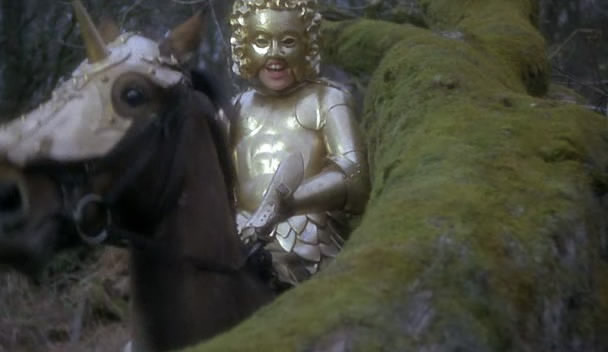
John Boorman's son Charlie played young Mordred in iconic golden armor in EXCALIBUR. Photo credit: Orion Pictures Corp., 1981
Some reviewers have criticized what they sense as a “rambling horrific dialog,” but Boorman’s quirky storytelling also includes many more elements of the original mythology than most modern retellings. Boorman is also well known for the acid-trippy science fiction film ZARDOZ (1974) starring Sean Connery, the timeless DELIVERANCE (1972) with its haunting banjo music and violent portrayal of the rural south, and HOPE AND GLORY (1987), a semi-autobiographical World War II drama. Indeed, DELIVERANCE gave the director the street cred to get a budget sufficient to make EXCALIBUR. Though his career has often had as many misses as hits, EXCALIBUR did achieve Number One status at the box office when it was released. Still, his work is quite distinctive, and elements of EXCALIBUR have found their way into many other films, including enhancing the common understanding of the Arthurian mythos.
If you are a fan of Boorman, King Arthur or sword and sorcery, I cannot recommend this film enough.


